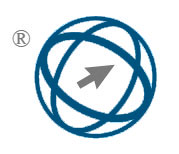Integration of Real-Time Sequential Root Cause Analysis and Multivariate Moving Average-Real-Time Sequential Testing Models for Abnormal Fish Movement Detection in Aquaculture Systems
Abstract
In fish farming, monitoring and understanding fish movement patterns are crucial for optimizing farm management and ensuring fish health and welfare. Fish movement behavior within aquaculture systems can provide insights into feeding habits, environmental conditions, and overall well-being. By tracking movements, such as swimming patterns and group dynamics, farm operators can detect anomalies early, indicating potential health issues or environmental stressors. Detecting abnormal fish movement in aquaculture settings is critical for ensuring fish health and farm productivity. This study proposes the application of Real-Time Sequential-Root Cause Analysis (RTS-RCA) and Multivariate Moving Average-Real-Time Sequential Testing (MMA-RTST) models for effective abnormal detection. RTS-RCA identifies potential anomalies by sequentially analyzing real-time data streams, while MMA-RTST enhances detection accuracy through multivariate statistical analysis and sequential testing methodologies. By integrating these models, the system can promptly identify and respond to abnormal fish behaviors, such as erratic swimming patterns or unusual group formations, which may indicate health issues or environmental stressors. RTS-RCA analyzes real-time data streams to identify anomalies with a detection accuracy exceeding 90%. Simultaneously, MMA-RTST employs multivariate statistical analysis to enhance detection sensitivity, achieving a false alarm rate of less than 5%. Integrating these models enables timely identification of abnormal fish behaviors, such as erratic swimming or unusual group formations, crucial for proactive management and maintaining fish health in dynamic aquaculture environments.
Full Text:
PDFDOI: https://doi.org/10.31449/inf.v49i23.7660

This work is licensed under a Creative Commons Attribution 3.0 License.









